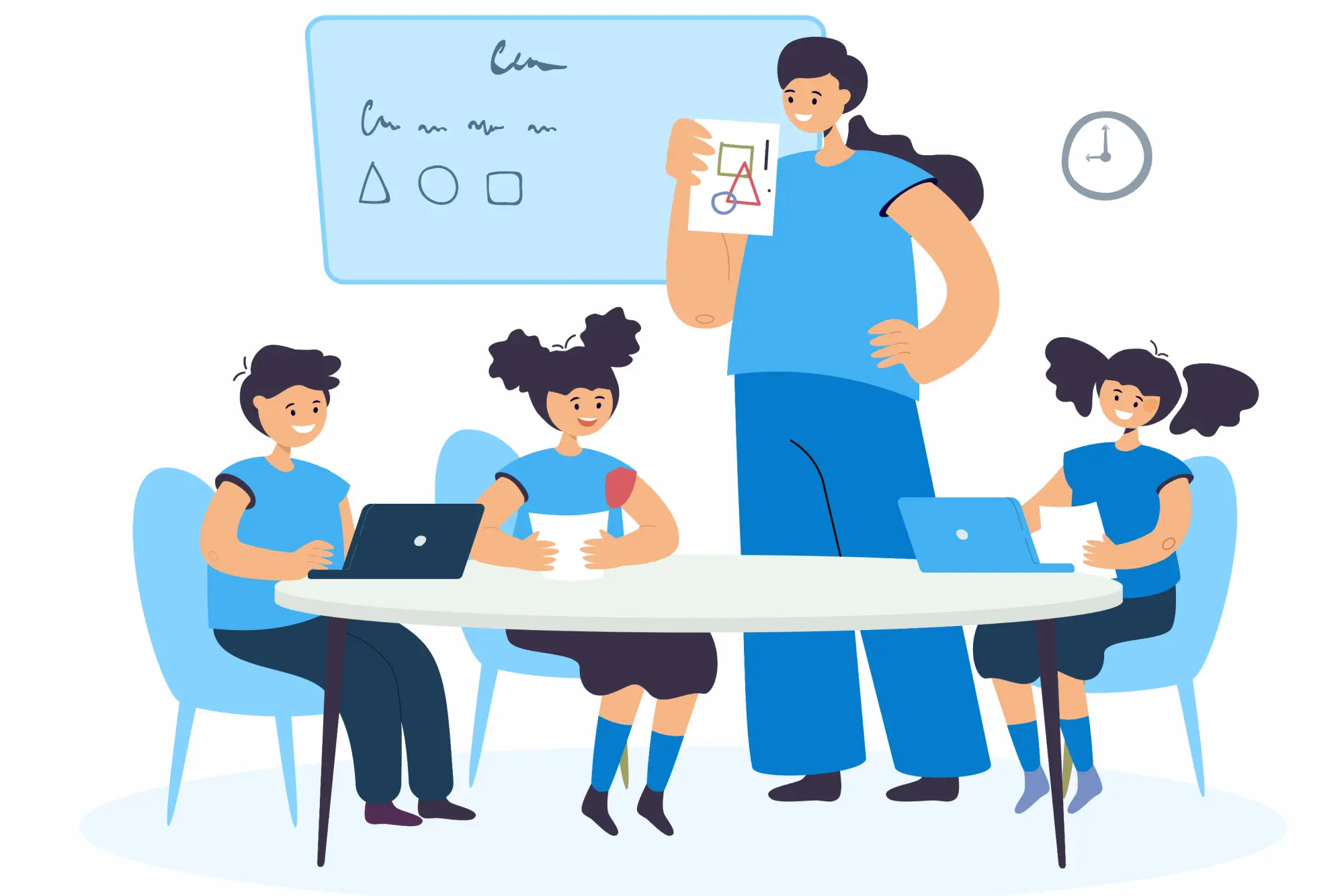No products in the basket.
Thinking about becoming a teacher in the UK? You’ve probably come across the term PGCE and wondered – what is pgce?. The PGCE – short for Postgraduate Certificate in Education – is one of the most popular and trusted paths into teaching. It blends university study with hands-on classroom experience, helping you build both the skills and the confidence to step in and teach from day one.
What Is PGCE?
A PGCE is a course you take after your degree that helps you become a qualified teacher. You learn how to teach at university and also get real experience in schools. This means you don’t just read about teaching—you actually do it.
You can do a PGCE if you already have a degree. The vast majority of courses take one year when you study full-time, although some may allow you to study part-time. The PGCE typically comprises 60 Master level credits and attracts The Qualified Teacher Status (QTS). You need QTS to teach in most schools in England.
According to gov.uk, over 30,000 people train to become teachers in England each year. Many pick the PGCE because it mixes theory with real practice.

Who Can Do a PGCE?
Anyone with a UK degree can apply. Your degree usually needs to match the subject you want to teach. For example, if you want to teach physics, your degree should be in physics or something close to it.
You also need GCSEs in English and maths at grade 4 (C) or above. If you want to teach younger children, you also need a science GCSE at that level.
If your certificates are from another country, you may need a UK ENIC Statement of Comparability. Many universities accept this to show your qualifications match the UK system.
Different Types of PGCE
The PGCE isn’t the same for everyone. You can train to teach different ages or in different places. Here are the main types:
- Primary PGCE: Trains you to teach children aged 5 to 11.
- Secondary PGCE: Prepares you to teach one subject to students aged 11 to 16 or 18.
- Post-16 or Further Education PGCE: Helps you teach in colleges or adult classes.
Some PGCEs are run by universities. Others are school-led through School-Centred Initial Teacher Training (SCITT). Both lead to QTS and include time in real classrooms.
What You Study on a PGCE
PGCE courses mix learning in class with practice in schools. You spend part of your time at university and part in real schools. Here’s what you usually study:
- How to teach and plan lessons
- How children learn
- How to check learning and give feedback
- How to manage classroom behaviour
- Training in your subject
You also get two or more placements in schools. These give you time to teach real pupils with support from trained teachers.
The University of Nottingham says its Primary PGCE includes over 120 days in schools. That’s about two-thirds of the course spent learning by doing.

How Long Does It Take?
The majority of courses in PGCE last one year on a full-time basis. It takes approximately two years in case you are studying part-time. Typically, the course begins in September and will finish in July.
You attend lectures, participate in workshops, and get assignments. You also get feedback on your teaching while working in schools.
Entry Requirements
To apply for a PGCE, you need:
- A UK degree (usually a 2:2 or higher)
- GCSEs in English and maths (and science if teaching younger children)
- A clear background check (DBS)
- Good English skills
Some subjects may ask you to take a Subject Knowledge Enhancement (SKE) course. This is common for physics, maths, or computing, where there are not enough teachers.
How Much Does It Cost?
Most PGCE courses in 2025 cost about £9,535 for UK students. Students from outside the UK often pay more.
You don’t have to pay right away. UK students can get a loan to cover fees and living costs. If you live in London, the loan can be up to £13,762.
You might also get a bursary or scholarship. For example, the Department for Education gives bursaries up to £29,000 for subjects like physics and maths. Scholarships can go up to £31,000.
See full details at Get Into Teaching.
Can You Get Paid While You Train?
Yes, but only on some routes. Some PGCE courses are salaried, like School Direct (salaried) or teaching apprenticeships. These let you earn while you train.
You start teaching right away and work full-time in a school. The school pays you a starter teacher’s wage. But you can’t get a loan or bursary on these routes.
How to Apply
You apply for most PGCE courses using the Apply for Teacher Training service on GOV.UK. You can apply for up to four courses at once.
Applications for 2025 open on 8 October 2024. It’s smart to apply early. Some courses fill fast, especially in popular areas.
The form asks for your certificates, work experience, and a personal statement. You also need two people to give references.

What Happens After You Apply?
After you apply, the university or training provider might ask you for an online or in person interview.
They may ask you to show a teaching demo or answer some questions. If they offer you a spot, you’ll need to show your certificates and pass a background check.
What Do You Get at the End?
If you finish the PGCE, you get two things:
- A PGCE qualification (usually with 60 credits at the Master’s level)
- A recommendation for Qualified Teacher Status (QTS)
With QTS, you can apply for jobs in most UK state schools. You then start a two-year support phase called the Early Career Framework. This used to be the NQT year.
International Students and the PGCE
If you’re from outside the UK, you can still apply for a PGCE. But you must follow visa rules and may need to pay higher fees.
Some bursaries are open to international students, especially in physics and languages. You must show your English level (like IELTS) and proof of funds for your visa.
The UK ENIC service helps compare your home country’s qualifications with UK ones.
Is PGCE the Only Route to Teaching?
No, but it’s the most common for graduates. Other paths include:
- Teacher training as part of a degree (like BA or BSc with QTS)
- Assessment Only route (for people already teaching)
- Teach First (a paid school-based programme)
- International QTS (iQTS) for those outside the UK
Still, the PGCE is a solid path. It gives clear training and the deep knowledge that many schools want.
Why Choose a PGCE?
There are many good reasons:
- It mixes ideas with real practice
- It’s respected across the UK and beyond
- You get credits toward a Master’s degree
- You get help from tutors and school mentors
Most of all, it prepares you to teach with skill and care.
Recent Updates in PGCE (2025)
In 2025, some big updates have come in. The Early Career Framework now gives more mentoring to new teachers. Trainees get better support during and after the course.
More PGCE courses now mix online and face-to-face learning. This makes training easier to fit around your life.
Subject Knowledge Enhancement (SKE) courses are now fully online. This helps more people get ready to teach high-demand subjects like maths and computing. The government is also putting more money into teacher training in 2025, especially in physics, chemistry, and computing.
Final Thoughts
So, what is PGCE? It’s not just a course. It’s a way to start a job where you help children grow and learn every day.
The PGCE provides you with the right skills you need, whether you wish to teach small children or adolescents. If you have good training, support, and practical work, you will be able to lead a class with confidence.
You can enrol in Training Tale’s affordable PGCE in Education Bundle Course to gain all the right skills before you apply to be a Teacher.





